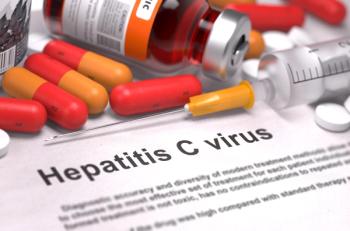
Early-Life Stress Combined With Traumatic Brain Injury Could Increase the Brain’s Vulnerability to Negative Programming
An animal study shows that early-life stress may increase risk-taking behaviors in adulthood; in humans, this could translate to risk of substance use disorder.
Early-life stress combined with traumatic brain injury (TBI) could have a negative impact on behavior in adulthood, according to study investigators who presented new research at the Society for Neuroscience’s annual meeting, Neuroscience 2023. Early-life stress and TBI were both associated with abnormal social behavior and oxytocin signaling, explained the study’s first author Michaela Breach.
“Stress is really powerful, and we shouldn’t understate the impact of early-life stress on the developing brain,” said Kathryn Lenz, senior study author and associate professor of psychology at The Ohio State University, in the press release. “I think it tends to get dismissed – but it’s an incredibly important public health topic.”
Many children experience adverse childhood experiences (ACEs) that cause stress, and this can increase risk of disease and mental illness as they grow older. In addition, kids are prone to head injuries (oftentimes caused by falls) and studies suggest these early-life injuries can cause mood disorders and social issues later in life.
Nevertheless, little is known about how ACEs interact with early-life head injury to cause behavioral or mental health issues, so investigators at The Ohio State University conducted an animal study to understand if early-life stress can compound the effects of an early-life head injury on a patient’s health and behavior later in life.
“Using an animal model allows us to really get into the mechanisms through which these 2things might be impacting brain development as it’s occurring,” Lenz said in the press release.
During the study, some newborn rats were separated from their mothers for 14 days (stressed), and others were not (unstressed). On day 15, some rats from both cohorts received a concussion-like head injury under anesthesia; others received no head injury. As a result, rats either received stress alone, head injury alone, or stress and head injury. These rats were then compared to uninjured, non-stressed rats.
Investigators also used single-nuclei RNA sequencing to see how gene expression in the hippocampal region of the brain was affected as the rats grew up. The researcher observed that early-life stress alone and stress combined with TBI activated excitatory and inhibitory neuron pathways; these are linked to brain plasticity (the brain’s adaptability to changes [both good and bad]).
“This may suggest that the brain is being opened up to a new period of vulnerability or is actively changing during this period of time when it could program later life deficits,” Breach said in the press release.
In addition, the results showed that stress plus TBI activated the oxytocin pathway—oxytocin being a hormone associated with social bonding—while TBI alone inhibited it.
“These differing effects with the oxytocin signaling… demonstrates that the effect of stress might modulate how TBI is changing the brain since the combination treatment was different from TBI on its own,” Breach said in the press release.
Further, early-life stress alone also increased the likelihood that the rodents participated in risky behaviors (eg, walking into an open space); this is linked to human data which demonstrates that early-life stress can increase risk of ADHD, “characterized by risk-taking behavior or substance use disorders,” Breach said. Thus, addressing early-life stress is important, with social support and enrichment being possible tools, according to Lenz.
“I don’t think it can be over-emphasized how damaging early-life stressors can be if they’re not dealt with,” Lenz said.
Reference
Early-life stress changes more genes in brain than a head injury. Ohio State University. News Release. November 12, 2023. Accessed on November 14, 2023. https://www.eurekalert.org/news-releases/1007591
Newsletter
Stay informed on drug updates, treatment guidelines, and pharmacy practice trends—subscribe to Pharmacy Times for weekly clinical insights.




















































































































































































































